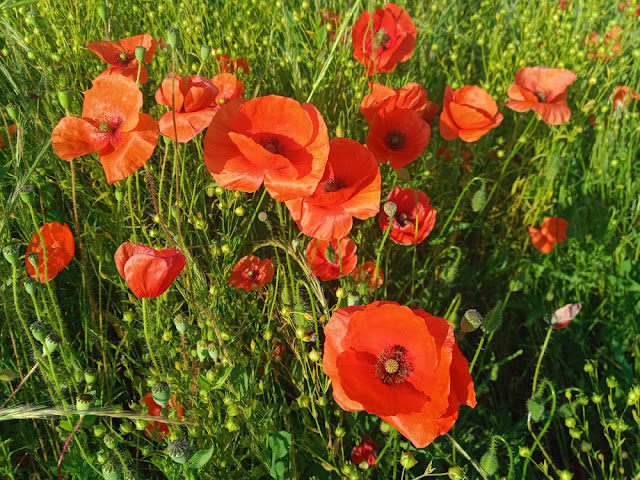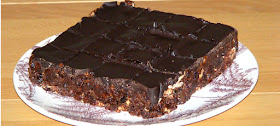Meeting the cyclists at the stadium in Chateauroux. Later this year this will
be where a stage of the Tour de France finishes.
More than a year ago the Nancy Wake Memorial Ride came to my attention on
Facebook [
https://www.facebook.com/people/Nancy-Wake-Memorial-Ride/61555790881536/
]. Led by Australian Armed Forces veteran Liz Wheeler a group of fellow
female veterans planned to recreate the epic cycle ride made by
Franco-Australian Resistance heroine, Nancy Wake. Working with them was the
Franco-Australian cycle tour company Velotours, based in the Pyrenees [
https://velotours.com.au/].
The cyclists with the Velotours support vehicle at the stadium.
Nancy is not as well known as one might think. She was an Australian living
the good life in the south of France, married to a French industrialist,
when the Second World War broke out. Both she and her husband were active
members of the Resistance. He was captured and killed but she survived,
known as the White Mouse, despite the price put on her head by the
Nazis.
Riding into town between Sylvie in the white car and Claudette.
As a member of SOE she participated in many acts of sabotage and hand to
hand combat. Her most remarkable feat was to ride from a village in Puy de
Dome, through Montlucon, Bourges and Issoudun to Chateauroux and back, a
distance of nearly 500 kilometres in 72 hours, in order to get a radio
message through to London.
Outside the public library and theatre, posing for the newspaper photo.
The Australian veterans took it a bit more leisurely, but they made stops
along the way to meet locals and spread Nancy's story. Our meeting in
Chateauroux was no exception. I was able to put them in touch with a local
journalist and members of the local Friends of the Resistance Museum
(ACRDI), including Michel Fouassier, the secretary of the association, and
Jean-Louis Cirès, the Chateauroux town archivist [
https://www.helloasso.com/associations/amis-du-centre-d-histoire-et-de-memoire-de-la-resistance-et-de-la-deportation-dans-l-indre-acrdi
].
Storing the bikes in the theatre café.

Chateauroux does not in fact currently have a Resistance Museum. It is a project 'de longue haleine' as
Michel put it ie it has long been in the planning, but funding has been
elusive. Consequently he was very pleased to have reason to collar a
journalist and get some publicity showing how interested people are in
Resistance history and how important it is to keep these memories alive
and honour the brave people involved.
The cyclists posing outside the building where Nancy Wake arrived
hoping to meet 'Samuel' the radio operator.
The cyclists arrived spot on time and we met them at the sports stadium
on the edge of town. Then Sylvie, a colleague of Michel's, led us all in
convoy into the centre to town to meet the journalist outside the public
library. After parking the bikes in the adjacent theatre café (closed
because it was a public holiday, but Michel had a key!) we walked the
short distance to the building Nancy came to meet with a radio operator
code named Samuel (real name Amédée Maingard). At the time it was the
Café du Cygne, now abandoned and with a name change, but the building
still exists. Unfortunately for Nancy, Samuel had fled for his life the
day before, and she had to move on.
Having lunch in the Italian restaurant.
Sylvie had booked us a table at an Italian restaurant nearby, so we
enjoyed a well-deserved and agreeable lunch. After lunch there was time
for a bit more sightseeing and we encountered the American Army
reenactors in the main square. They were offering rides in their vintage
trucks and jeeps. We went to see the house where the very first radio
message was sent by the Resistance to the Allies in London, and then the
War Memorial and the memorial to the Righteous among Nations.
Second World War American Army re-enactors, offering free rides to the
public in their vintage vehicles as part of the Victory in Europe
activities on 8 May.
After that our doughty cyclists needed a rest and a freshen up, so we
parted company. They went to their hotel, we came home. It was quite a
special day and we've made some great new friends, both French and
Australian.
At the house where Georges Bégué sent the first radio message from the
Resistance to London. All subsequent SOE radio operators were known as
'Georges', and referred to as 'pianists'.

Further reading: Article in the Nouvelle République (in French, behind
paywall)
https://www.lanouvellerepublique.fr/chateauroux/cinq-australiennes-dans-la-roue-de-la-resistante-nancy-wake-dans-l-indre-1746727637
Wikipedia page on Nancy Wake
https://en.wikipedia.org/wiki/Nancy_Wake
The War Memorial, which honours not just combatants, but those
civilians who were deported to concentration camps.
The nearby memorial to the Righteous Among Nations, with Michel
indicating his cousin's name at the bottom.





.jpg)








.jpg)









.JPG)
.jpg)



























